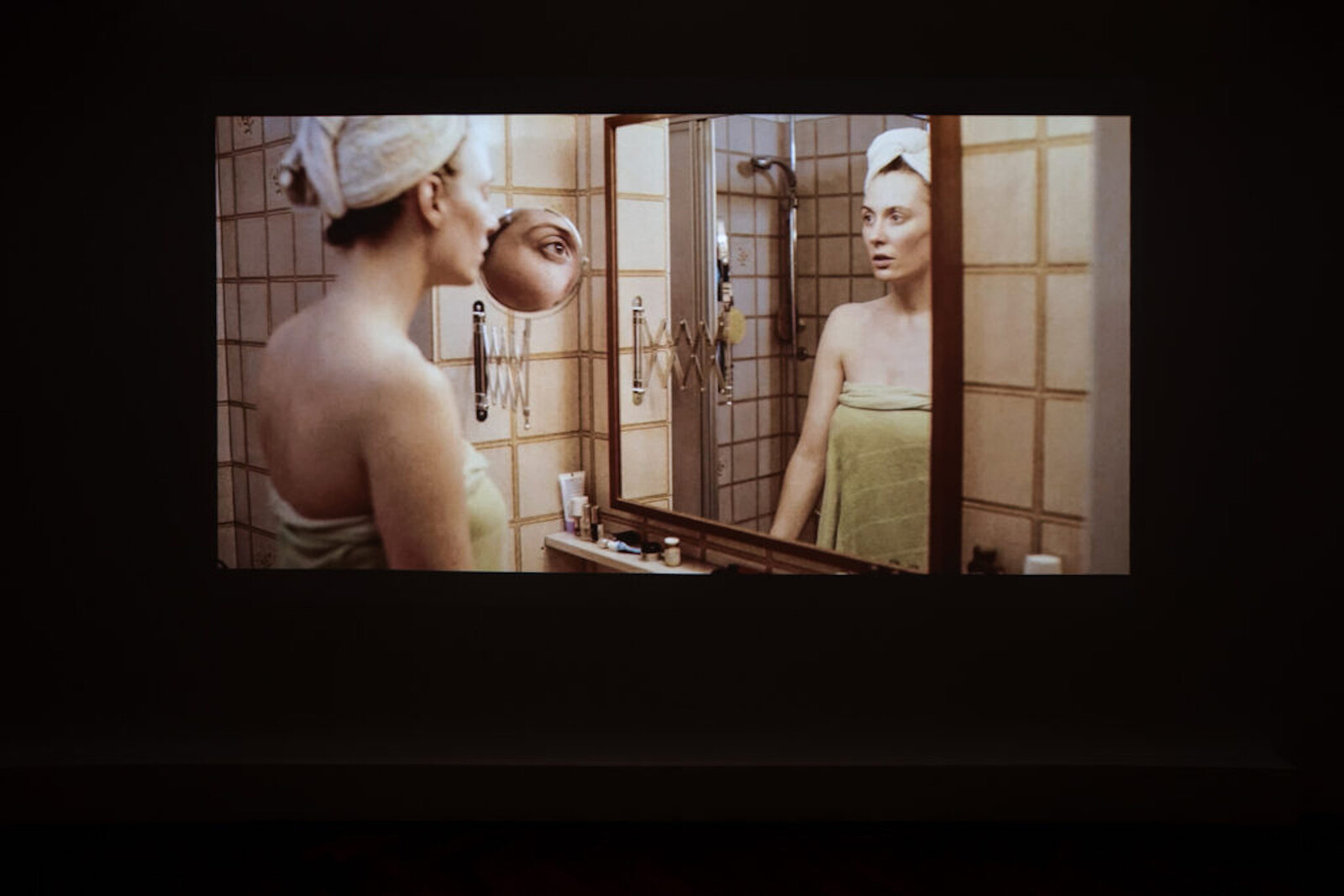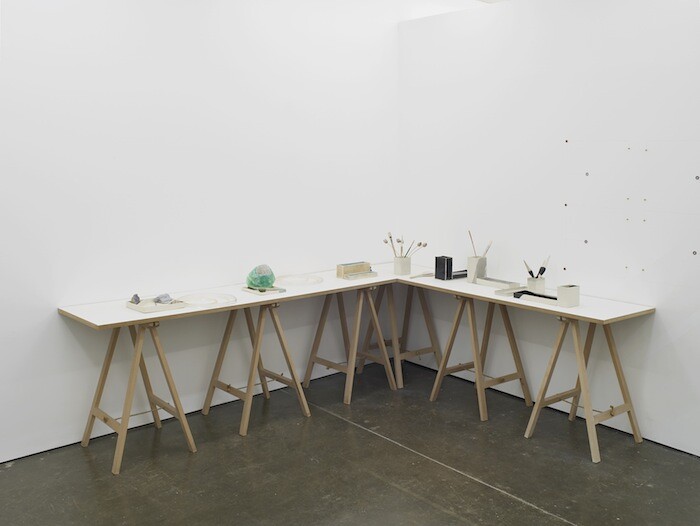Categories
Subjects
Authors
Artists
Venues
Locations
Calendar
Filter
Done
May 20, 2022 – Feature
London Roundup
Orit Gat

In the local elections held the week before London Gallery Weekend, the residents of Westminster City Council, which covers much of central London, voted Labour into a majority for the first time since the council’s creation in 1964. The vote was partly informed by the Conservative council’s misguided decision, widely publicized in 2021, to spend six million pounds on the “Marble Arch Mound,” a twenty-five-meter-tall astroturf hill and viewing point designed to lure viewers back to the city’s busiest shopping district. It failed: many stores are still covered with for-rent signs, one of which peddled a “blank canvas for new ideas.” These are the visual and linguistic relics of the before-time: they represent old ideas of urban environments and their inhabitants’ habits, and beg the question, “What if we don’t want to return to how things were?”
At Emalin, Augustas Serapinas is displaying eight large black reliefs made of roof shingles taken from a wooden house from his home country, Lithuania. Many of these traditional architectures are now abandoned or destroyed and used for firewood. Serapinas bought one, broke it apart, charred its roof shingles, and repurposed them into monochromes that are part-painting, part-sculpture. They are heavy, loaded with their …
June 28, 2021 – Feature
London Roundup
Orit Gat

It would be impossible to think about London’s first Gallery Weekend in early June outside the context of the slow re-emergence from lockdowns. I know this strange sensation is not unique, but the experience of a public disaster dealt with largely by isolating from society has also marked the way I look at art. Taking stock of my tour of the city, it strikes me that the artworks which affected me most were ones that displayed intimacy, proximity, and all those daily exchanges from which I have felt distant these past sixteen months.
That is not to say that the daily and intimate are not political. At Lisson, “An Infinity of Traces,” a group show curated by Ekow Eshun, focused on the work of UK-based Black artists. It included Alberta Whittle’s video Between a Whisper and a Cry (2019), which explores Barbadian poet and historian Kamau Brathwaite’s idea of an oceanic worldview in the aftermath of the Middle Passage, and a series of watercolor text drawings by Jade Montserrat (who also has a solo show at Bosse & Baum in South London) that bear heavy, physical messages, like The smell of her still burning hair (2017). When I was trying to …
May 18, 2017 – Review
Christina Mackie’s “Drift Rust”
Patrick Langley

Christina Mackie’s installations have an instinctive and provisional feel about them. They present the viewer with arrays of disparate objects, arranged on trestle tables, walls, and shelves, assembled according to a spontaneous logic of correspondence and juxtaposition. Mackie refers to this aspect of her work as “trestle art.” Wolfgang Tillmans’ tables and vitrines (such as truth study centre, Tate, 2017), Camille Henrot’s The Pale Fox (2014), and Portia Munson’s Pink Project: Table (1994) are a few notable examples of the genre. Recalling the Surrealist tradition of assemblage and the more recent trend of “archive art,” in which artists collect and compile existing imagery and information, “trestle art” positions the artist as curator or analyst. Filtration and distillation take precedence over production. Objects, selected according to fixed and often idiosyncratic criteria, are brought into conversation with one another.
As Hal Foster has observed, “archival artists seek to make historical information, often lost or displaced, physically present.” One obvious difference between Mackie’s works and those of other “trestle” and “archive” artists is that she makes almost all of the objects herself. A notable example in “Drift Rust,” Mackie’s solo exhibition at London’s Herald Street (the show is described as an installation in the …
January 24, 2011 – Review
Peter Coffin’s "Cosmolology + 1" at Herald St, London
Anna Gritz

There is something theatrical about Peter Coffin’s recent exhibition at Herald St. The scene is set for what appears to be a science-play consistent of three main set components: clouds, hanging plants, and neon wires—backdrops, curtains, and stage lighting. The gallery/stage functions as a cosmic model, or rather a rehearsal of the cosmic process as Antonin Artaud would call it—the study of the study of the study of the Cosmos.
Like in any exploration, the subject reveals itself bit-by-bit, reliant on the point of view of the visitor, which slowly takes shape through the act of conquering space. That is, the visitor turned actor performs this play collectively with the works on view. In the first room, in the midst of an arrangement of seven thin neon tubes that wriggle in erratic, vertical lines from ceiling to floor, Untitled (Lines), 2011, look like jungle lianas, each flickering in a different color taken from the Newtonian color spectrum. Yet there is something materially unstable and slightly unnerving about these solid glass tubes and the way they reflect every move in a multifarious shadow play onto the gallery walls. Whoever meanders through the colonnade of light is engulfed in a light therapy of …